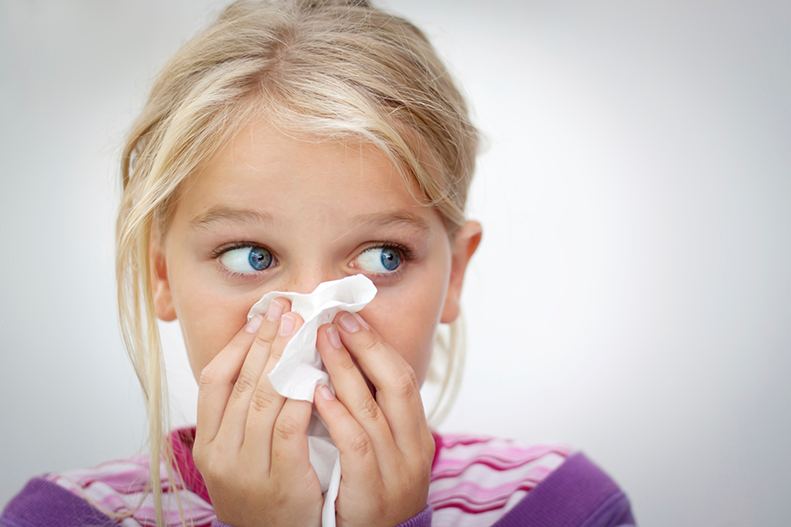Did you know that up to 30% of children and adults have environmental allergens? From pet dander to pollen and even substances as common as dust mites, the potential for allergies exists throughout the environment. Allergic disorders typically appear in childhood and can be associated with high healthcare costs. Today, it’s relatively simple to determine if your child is allergic to something specific and how he or she may be treated for that allergy to minimize discomfort.
Causes of Allergies
Allergies may affect children in the spring, but it’s not unusual for kids to experience environmental allergy symptoms any time throughout the year. Allergens, or the things that cause an allergic reaction, can be more prevalent during different seasons. For example, tree pollen can cause symptoms in the spring, while weed pollen may be more active during its peak pollination season in the fall.
Common allergens include:
- Animal dander
- Dust mites
- Food
- Insects
- Latex
- Medicine
- Mold
- Pollen
- Poison Ivy or Oak
Allergy Symptoms
Symptoms of environmental allergies can present themselves as itchy or red eyes, a runny nose, cough, postnasal drip or nasal congestion.
Symptoms can be bothersome to children and may affect sleep, daytime functioning, productivity in school, and general quality of life.
What to Do If You Child Is Experiencing Symptoms
If your child is experiencing any of the symptoms associated with an allergic reaction after contact with a potential allergen, you should contact his or her pediatrician.
Obtaining a Diagnosis
Your child’s pediatrician may refer you to an allergy specialist for diagnostic testing, which can include skin tests or blood tests.
Treatment Options for Children
Your child’s treatment will be determined based on several factors, including age, medical history, severity of allergies, and his or her tolerance for medications or procedures.
Avoidance is typically the most effective way to treat allergies, and it is suggested that your child stays away from anything that causes an allergic reaction as much as possible.
Immunotherapy, or allergy shots, is also very effective. The shots are made up of a mixture of allergens, called an allergy extract, that affect your child. Medications can help relieve symptoms, as well. Medicinal treatments may include antihistamines in the form of tablets, capsules, liquid, or injections.
In conjunction with these treatments, you can also make modifications to ease your child’s symptoms based on your child’s allergens. If your child has a dust mite allergy, keep the vents and filters in your house free of dust, vacuum rugs in the home regularly, and keep your indoor humidity below 50 percent.
Immunotherapy, or allergy shots, is also very effective. The shots are made up of a mixture of allergens (i.e. allergy extract) that affect your child.
If you think your child may be suffering from allergies, talk to his or her doctor, or visit the UPMC Children’s Hospital of Pittsburgh’s Division of Pediatric Allergy and Immunology webpage for more information.
Editor's Note: This gallery was originally published on , and was last reviewed on .
